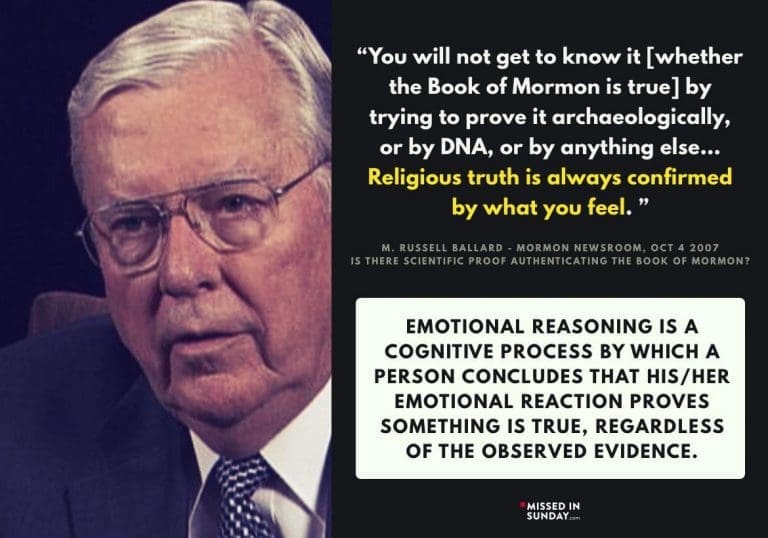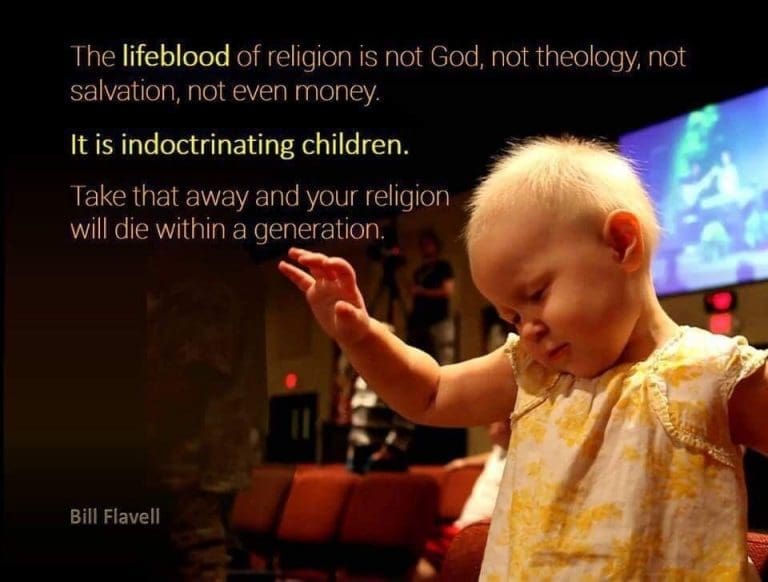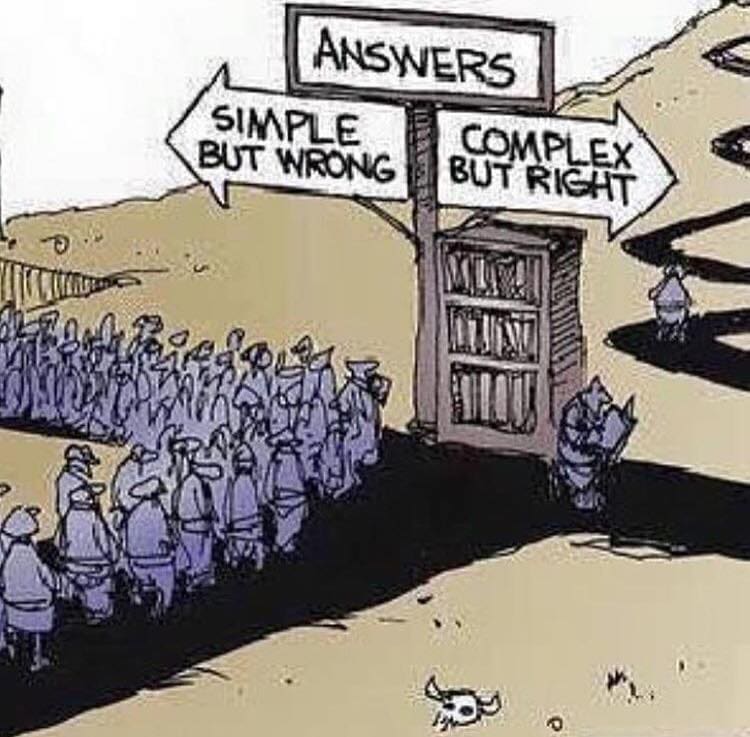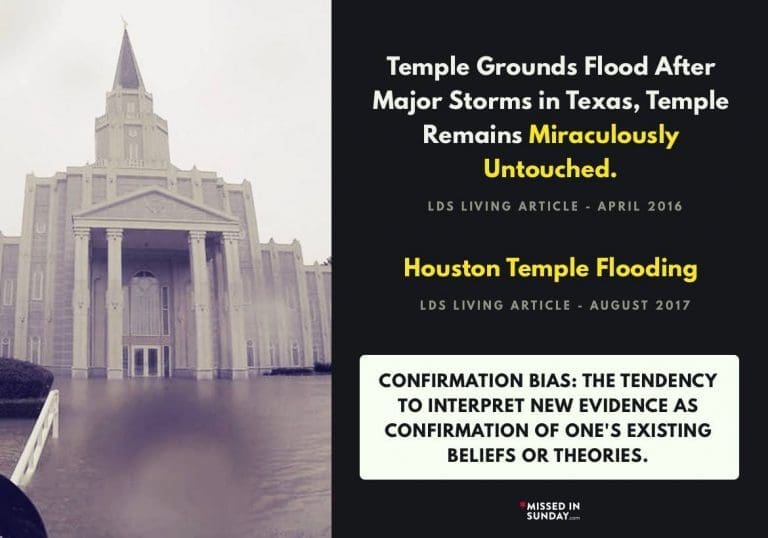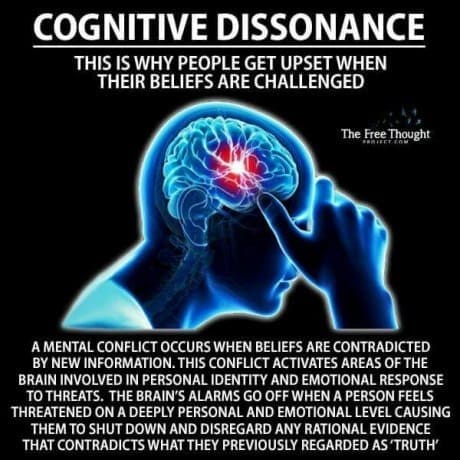The LDS Church teaches members from childhood to rely upon feeling the spirit to confirm truth, promoting a personal connection to God which stems from its uniquely powerful priesthood-conferred Gift of The Spirit. Church leaders and missionaries often instruct members and investigators of the religion that once they confirm through prayer that the Book of Mormon is “true,” they can then know that Joseph Smith was a true prophet of God, which naturally means the LDS Church is Christ’s one true church. The Church relies heavily upon patriarchal authority as the means by which humanity learns God’s truths. Its exclusively male leadership structure is endowed with spiritual gifts, keys, powerful discernment and authority.
Upon learning factual LDS history and doctrines, many members begin to question if feelings and emotion are valid mechanisms of confirming truth. The modern Church insists that it is impossible to receive a valid personal revelation that is contrary to that of the leadership, let alone a prompting that may lead one to step away from the “one true church.” Questions of faith are to be handled privately with local priesthood leaders, as publicly questioning the Brethren has led many to church discipline or even excommunication.
MY TESTIMONY
The author of these Truth Claims essays provided to Mormon Stories, Michael Brown, shared his testimony as follows:
Lest anyone conclude that I merely lack the powerful spiritual experiences and personal confirmation they received, allow me to share how I obtained my testimony. Like most Mormons, I was born into the covenant, attended church every Sunday and Seminary every school morning. I was one of those 8-year-olds who, prompted by my multi-generational believing parents, regularly stood in testimony meetings to declare “I know the Church is true,” unaware that it is not a normal thing for young children of other faiths to do. I learned that God was always watching me, that even small sins could compound and magnify, like a small splitting wedge forgotten within the crotch of a mighty oak tree, resulting in unintended destruction years later.
Having been an exemplary LDS youth, serving in nearly every leadership calling available, I anxiously prepared to serve the Lord on a mission. In preparation, I realized that I leaned too heavily upon my parents’ testimonies and the indoctrination I’d received since birth. Seeking a greater confirmation, I fasted in preparation for kneeling before the Lord in humble prayer in the privacy of my room.
After several minutes of the most earnest exhortation I had ever offered, pleading repetitiously for a confirmation that the Church, Joseph Smith and the Book of Mormon were true, I felt a warmth envelop me from within; tears filled my eyes, flowing down my cheeks. I sat for a moment in the afterglow, comforted with a renewed knowledge that the Church was indeed true. In the years that followed, I drew upon that powerful experience, and many others, testifying of the spiritual confirmations I had received. I knew the Church was true. I knew that Joseph Smith was a prophet of God and the Book of Mormon was true. I knew.
OTHER CHURCHES
While Mormons may recognize the goodness and sincerity of other faith traditions, they regularly profess that they are the only ones encouraging and receiving a spiritual confirmation of the “fullness” of the Gospel. Yet, in a similar fashion as Mormons, countless other religions also receive confirmations and testify with what seems the same spirit and certainty. Many parallels to early Mormonism can be seen in other nineteenth-century evangelical faiths such as Methodism, which has a fundamental dependence upon an inner witness of the Holy Ghost. Even religious extremist groups like Heavens Gate, Scientology, Jim Jones and David Koresh sought and obtained regular spiritual experiences.
Explore the testimonies of others who bear witness of the truth and spirit of their own religious traditions. Aren’t they remarkably similar to the LDS experience?
Grant Palmer aptly writes, “When a person experiences the spirit at a Protestant revival meeting or when reading the Book of Mormon, it is not my belief that the powerful feelings prove the truthfulness of the doctrines heard, taught, or read. Nor does the Spirit, which testifies of the Book of Mormon, confirm the historical reality of the book. This sustaining and uplifting feeling, in my view, is a God-felt urging to repent and come unto Christ. It does not prove the truthfulness of a doctrine, book, or belief, nor does it need to be a valid religious experience to any person.” [1] Indeed, emotional experiences are difficult to tie to facts, and perhaps are never meant to be used in that way.
Seventh Day Adventists
Another example of spirit testifying of truth can be seen with Seventh-Day Adventists. This religion was founded in the mid-1800s during the same Second Great Awakening, in the same upstate New York “burned-over district” as Mormonism. The Church today boasts a worldwide baptized membership of 16-19 million, adheres to a health code, maintains a missionary presence in over 200 countries and is governed by a General Conference with smaller regions administered by divisions and local conferences.
Jehovah’s Witnesses
Very much like Mormons, the JWs passionately know their church to be God’s one true church; members bear testimony and serve missions. It too was founded in upstate New York in the mid-1800s and claims a worldwide membership of 19 million.
Islam, the second-largest worldwide religion, boasts over one billion members and encourages followers to seek the spirit of confirmation. Muslims know the Quran to be the word of God, and that Mohamad, an uneducated orphan, saw an angel of light. Does that occur without some basis in a spiritual confirmation?
As it turns out, there is a scientific term related to the relatively common sensation of feeling the spirit – Frisson: A sudden strong feeling of excitement or fear; a thrill. The sensation commonly occurs as a moderately pleasurable emotional response reaction, incorporates both psychological and physiological components, and is known to be amplified by music.
Elevation emotion is another widely recognized human phenomenon, a normal physiological response that is hard wired into the human experience. “Elevation is an emotion elicited by witnessing virtuous acts of remarkable moral goodness. It is experienced as a distinct feeling of warmth and expansion that is accompanied by appreciation and affection for the individual whose exceptional conduct is being observed. Elevation motivates those who experience it to open up to, affiliate with, and assist others. Elevation makes an individual feel lifted up and optimistic about humanity…Jonathan Haidt is a preeminent researcher in the study of elevation and other positive moral emotions. He defines elevation as an emotion that is caused by witnessing virtuous acts or feats of moral beauty. He asserts that elevation elicits warm, pleasurable sensations in the chest, and it also motivates individuals to act more virtuously themselves.” (Elevation – Wikipedia)
This is not to say that such experiences do not feel real, they certainly do, but to conclude that they prove anything about Mormonism or truth in general is to misapply their purpose. While humans tend to embrace the norms and emotional cues of their tribe, we don’t tend to argue that this is proof they are right.
While religions may prefer that science not demystify these kinds of experiences, they are shown scientifically to be common throughout humanity, not at all unique to Mormonism or any specific faith. Furthermore, the same sensations can be induced with drugs or by stimulation of the brain. Some historians of LDS history have even provided compelling examinations of how hallucinogens may have played an important role in the mass visions experienced at the dedication of the temple at Kirtland, OH in 1836. Never before or since in the Mormon tradition has there been such a strong outpouring of shared supernatural visions, speaking in tongues, prophesying and spiritual raptures.
INDOCTRINATION
In addition to receiving organized religious training from a young age in the Church’s Primary and Sunday school programs, LDS high school students are enrolled in extracurricular religious study classes an additional five days a week. Saturdays are often filled with some sort of youth group activity, service project or temple trip. Parents are instructed to read from LDS scriptures or publications daily, to pray together as a family before and after school and work, at mealtime, and to prominently display religious iconography in the home as constant reminders of promises made. Taken as a whole, LDS youth often experience purposefully designed religious indoctrination every single day of their critical development years.
LDS members remain occupied with near constant activities that forge strong emotional and social bonds and can be seen as ways through which religions of all stripes enhance feelings of loyalty to their tribe. Sundays are regularly consumed by hours of church services, plus additional leadership obligations and auxiliary planning meetings. Repeated thoughts and narratives congeal into hardened belief systems, regardless of the veracity of the underlying assumptions. LDS authority figures and role models inspire subtle fears about the temptations of the fallen world, reinforcing unfavorable cues upon those who “fall away” or suffer “loss of testimony.” With Mormonism thoroughly entwined in every aspect of early life, it is difficult to even imagine alternate opportunities or what life could be like outside of Mormonism.
Furthermore, from the age of eleven, adolescents become accustomed to one-on-one closed door worthiness interviews with male authority figures, which include sexually-explicit questions about masturbation, pornography and sexual encounters. The church suggests that the purpose of such interviews is to “help youth establish a trusting relationship with a priesthood holder.” [2] This is problematic in terms of lowering appropriate boundaries and making it more difficult for children to recognize when abusive adults may be using their position of authority, religious language and awkward situations to groom or manipulate them. When vulnerable youth are put into spaces where they are taught to shame themselves and their natural bodily responses, are they clear-minded in the choice to continue down the path that all trusted adults around them say is necessary?
Subtle yet powerful forms of psychological manipulation continue into adulthood through the secret ceremonies conducted only within LDS temples, whereby members who have passed a series of worthiness interviews receive their eternally critical “endowment.” Few members have a clear idea of what they will be engaging in or covenanting to before they enter the temple, as the idea of “sacred, not secret” makes it difficult or even forbidden to discuss the specifics outside of the temple.
LDS temple rituals begin by adorning oneself in symbolic clothing, whose origins were “significantly borrowed” from Freemasonry, before being added to in a particularly complicated order as the ceremony continues, often with the silent correction of those nearby. As the heavily symbolic rituals begin, there is a brief moment of silence when participants are informed that they may leave if they wish, but with beloved family members surrounding, and no example of others ever leaving, such behavior is exceptionally uncommon. Fear is promptly impressed upon members as they are instructed that they will fall under Satan’s power if they do not keep every promise made with God at that moment. Even devout members are often troubled by the LDS temple experience and lack of personal choice they have felt.
The LDS church has recently taken steps to keep its young adult population engaged more continuously in its programs. In 2012, the Church reduced the minimum age for missionary service for young men from 19 to 18 and the minimum age for young women from 21 to 19. By short-circuiting the critical year between high school and college, when many young adults naturally explore a heightened sense of personal freedom from their parents, the Church seems to have hoped to retain influence by engaging more youth to serve missions. The change resulted in a temporary spike in the number of full time missionaries, which had been steadily declining, but the number of new missionaries has since abated and remains in rapid decline.
While serving, missionaries are tightly controlled via an extensive set of rules and highly-regimented daily and weekly routines, including devotionals and mandatory scripture study. Missionaries operate under strict rules to never be separated from their assigned companions, who will report their misdeeds, however small or great, to their regional leaders. Until recently, missionaries were prohibited from calling family, except on Christmas and Mother’s Day.
Mission presidents represent the sole authority to which these young adults can appeal, and they are taught to look on him with a kind of reverence that can seem disturbing from the outside. Regular private interviews with the Mission President are often an exercise in shaming, as he questions his teenage conscripts specifically about their sexual thoughts, masturbation habits, compliance with ubiquitous rules, and their dedication to achieving recruitment goals and the increasingly elusive convert baptism. The worth of souls is great in Mormonism, thus an intense culture of “never enough” frequently prevails. In severe cases, the Mission President has the authority to send a missionary home early for dishonorable conduct, one of the most shameful experiences in Mormon culture.
Those who complete their mission participate in an exit interview with their Mission President, and return home to a series of additional worthiness interviews, whereupon they receive instructions to pursue their next mission – to find a worthy partner to marry in an LDS temple and begin their own eternal family, thereby solidifying another commitment to the LDS Church and its eternal plan. This is but one of several reasons why the age of first marriage for LDS members remains consistently below average compared to the surrounding culture. Many who choose to separate from the LDS Church later in life express regret for missed opportunities, paths unexplored or responsibilities taken up too early.
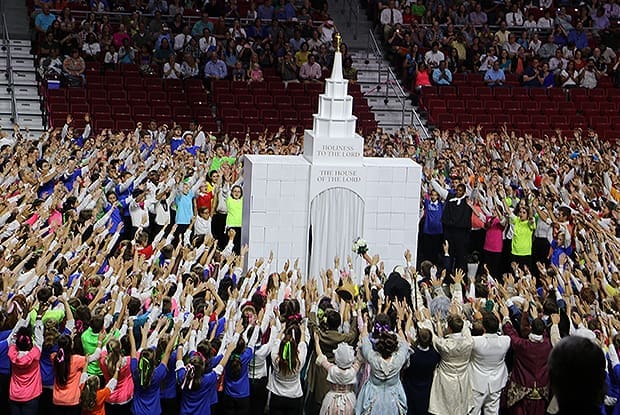
SPIRIT TESTIFIES OF FALSEHOOD
The idea that emotional or spiritual experiences are more important than facts and established science is further complicated by the history of the Church. Many past teachings testified of by prophets and apostles have changed over time. For example, Brigham Young and other apostles taught that Adam was God, until the doctrine was disavowed by later prophets and apostles. For generations, prophets also reiterated divisive race doctrines, until they too were disavowed.
An examination of the Mormon spirit testifying of falsehoods can be found in Elder Paul Dunn. Though his fantastic stories felt good, many were later proven to be fabrications. Paul H. Dunn falsely claimed he was the “…sole survivor among 11 infantrymen in a 100-yard race against death, during which one burst of machine-gun fire ripped his right boot off, another tore off his ammunition and canteen belt and yet another split his helmet in half – all without wounding him.” [3] He used this false story and many others to manipulate emotional responses from his audiences. Dunn was placed on “emeritus” status when the truth emerged, but the problem remains that the feelings he inspired were no different from those that came from supposedly “true” stories.
Paul Dunn’s example is not an isolated incident. Modern LDS apostles are still using “faith-promoting” stories that are false to stir emotion in their audiences. For instance, Apostle Jeffrey Holland recently retracted a missionary rescue story that had been widely distributed and enjoyed by members. Though the story was largely inaccurate, members felt the spirit and shared the story numerous times. Is it possible that we humans are predisposed to believe that which we desire to believe? “Feeling the spirit” certainly feels good, but is it really a reliable measure of truth?
LEARN MORE:
- Paul H. Dunn, Field of Dreams, Sunstone, Lynn Packer
GIFT OF DISCERNMENT
Latter-day Saint faithful often refer to “the power of discernment” – the notion that the Spirit confers heightened understanding and enlightenment. While we are told we can’t expect perfection from our human leaders, it is interesting to observe how none of the LDS Presidency sensed Mark Hoffman’s frauds as they analyzed his forgeries and personally negotiated with him. Nor did any of the priesthood-endowed interviewing authorities sense the darkness within Ted Bundy as he was baptized into Mormonism during his serial killing spree which possibly encompassed up to 100 victims. Bundy remained a member in good standing until his crimes came to light many years later.
The idea that Church leadership (male priesthood holders exclusively) have a special power of God has led to many problematic situations of abuse that were not recognized by discernment or any other supernatural means. In fact, allegations of sexual abuse, many of which were covered up and/or privately managed through the Church’s attorneys are increasingly coming into public view. Many suggest that the practice of subjecting teenagers to sexually explicit questions behind closed doors is coming to a close, albeit only reluctantly on the part of the Church.
LEARN MORE:
- Official LDS Statement: Alleged sexual assault by Mission President
- MTC employee confirms MTC room in basement ‘odd’ basement room
- Attempted Utah legislation to prevent private party recordings
THE SALAMANDER LETTER
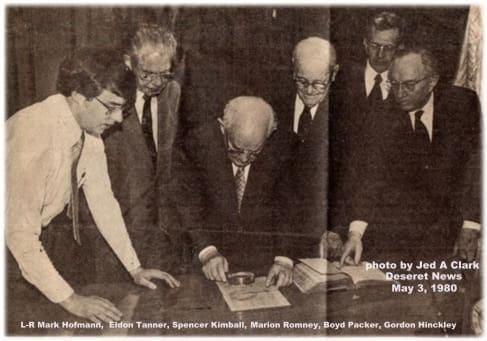
Mark Hofmann, the infamous forger of documents, was well versed in Mormon history and knew exactly how to entice Church leadership. Hofmann knew the Church purchased documents and artifacts that could challenge its historical narrative, often with only cursory verification. [4]
Having secured the leadership’s trust with prior transactions, Hoffman created a document that elaborated upon Smith’s occult practices, explicitly mentioning the peep stone, enchantments, Alvin’s role, and the salamander lore. Hofmann later confessed to investigators that it was “a clumsy job . . . completed in a day,” and that he “wasn’t fearful of the Church inspiration detecting the forgery.” [5] It’s likely that Church leaders were persuaded of his fabricated Salamander Letter because they knew Joseph had been deeply entrenched in the magical practices of his time, though this was not something widely shared with the membership.
Before the Salamander Letter was deemed inauthentic, LDS Apostle Dallin Oaks defended the letter and Joseph’s use of the word salamander. Later, as the elaborate fraud became public knowledge, Oaks derided critics for attacking his speech, even chastising members to be “more sophisticated in their evaluation of what they read.” President Gordon B. Hinckley also offered apologetic explanations for the troubling documents. Ironically, Jerald Tanner, a prominent anti-Mormon researcher, discerned the letter to be a hoax early on. He relied upon facts and information when verifying historical accuracy, rather than on supernatural spiritual discernment.
LEARN MORE:
- Dallin Oaks, “Recent Events Involving Church History and Forged Documents,” Ensign, Oct 1987.
- The Salamander Letter
MENTAL PITFALLS
Mormons are often cautioned against leaving the LDS Church because it will destroy their lives; they are reminded to embrace their testimonies and spiritual experiences. Mormonism often feels good, as it is indeed comforting to believe you know the one, true eternal plan of God. But most often, the religion relies upon emotion, feelings of spirituality and community ties over verifiable information. Facts and evidence so often fail to sway feelings and opinion. But failing to deal with facts, even proactively avoiding them, leads to many problems.
Here are some common mental pitfalls that can be seen in Mormon thinking, which are outlined by professional psychologists when talking about flawed patterns of reasoning within groups:
- Motivated Reasoning – Seeking out only the information that supports what you already believe.
- Appeal to Ignorance – Claiming that something is true simply because it hasn’t been proven false. “We do not know where Lamanites actually lived, but we know them to be true.”
- Appeal to Fear – “Where will you go to find all these great values; what will you teach your children?”
- Arguing for Consequences – Skirting the valid argument, while appealing to real or imagined consequences. “Your mother will be so disappointed if you leave the church!”
- Appeal to Bandwagon – The notion that if enough people believe in something, it must be true.
- False Dilemma – Presenting a limited set of possible outcomes. “If you leave the Church, you’ll stop believing in Jesus and get addicted to porn.”
- Red Herring – Something that misleads or distracts from a relevant statement or important question. Johnny says, “Lamanites aren’t historical.” Bishop replies, “I know that Jesus loves us and that our sins are forgiven.”
- Appeal to Irrelevant Authority – Appealing to cultural wisdom, vague authority, or one who is not expert. See the LDS Gospel Topics Essay Book of Abraham.
- Equivocation – Arbitrarily changing the meaning of basic words – Mormon examples include “translator,” “seer,” “revelator.”
- Slippery Slope – Arguing that an idea or action leads to severe consequences. “If Johnny masturbates, he’ll be fornicating and watching porn in no time.”
- Circular Reasoning – “The Book of Mormon states that Lehi and his colony found horses upon this continent when they arrived; and therefore horses were here at the time.”
- Escalation of Commitment – When a group, faced with increasingly negative outcomes, continues the same behavior rather than alter course.
LEARN MORE:
- Fascinating visual representation of the 188 known cognitive biases.
FACTS DON’T CONVINCE PEOPLE
REMEMBERING THINGS THAT DID NOT HAPPEN
In the event that a person manages to overcome the usual human mental pitfalls, studies indicate that about half of all individuals will come to believe that a fictional event occurred if they are told about that event and then repeatedly imagine it happening.
LEARN MORE
- Awake My Soul a Faith Journey
- Testimony, Spiritual Experiences, and Truth: A Careful Examination
- Why Facts Don’t Change Our Minds – The Limitations of Reason
- The Neuroscience of Changing the Mind (Podcast)
- The Backfire Effect
- If the Church Really Isn’t True, Then Why Have I Felt the Spirit?
- Faith Imagery Lights Up Mormon Brain
- Chris Oyakhilome’s holy ghost show
- Why I left
[1] An Insider’s View of Mormon Origins, 133.
[2] The Salt Lake Tribune, The LDS Church Considers Lowering Age of Worthiness Interviews, July 12, 2019.
[3] Arizona Republic, Feb 16, 1991, B-9.
[4] See Leonard Arrington: The Writing of Mormon History, 423–29.
[5] Gregory White Smith and Steven Naifeh, The Mormon Murders, 429–33.

